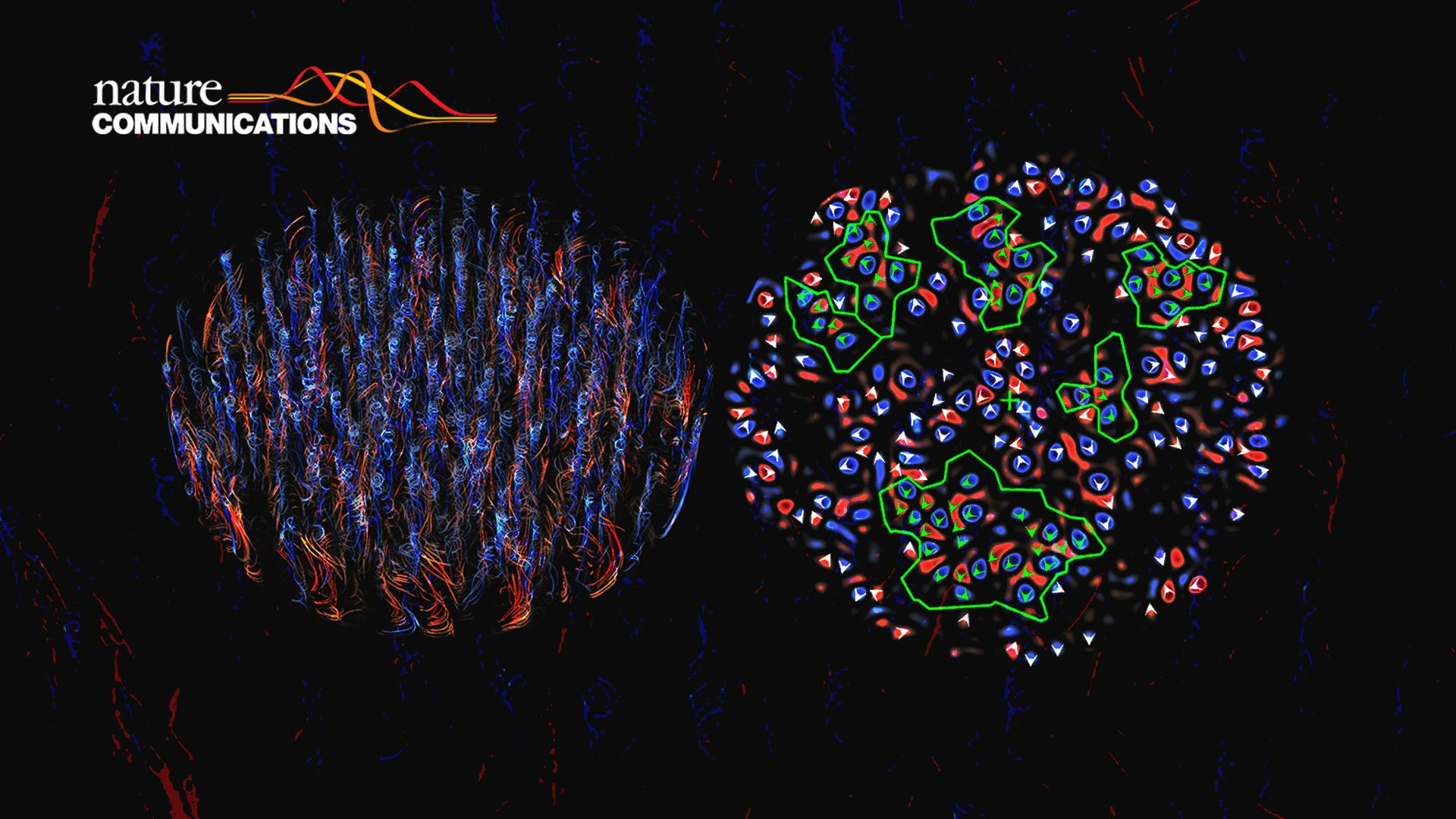A joint research team led by Professor Ke-Qing Xia of the Southern University of Science and Technology (SUSTech) and Professor Jin-Qiang Zhong of Tongji University has published important research findings on the motion of vortices in rotating convective flows. Their research article, entitled “Inverse centrifugal effect induced by collective motion of vortices in rotating thermal convection,” was published online in the prestigious journal Nature Communications.

Physical objects in a rotating medium are subject to a centrifugal force. Centrifugal force drives dense objects outwardly from the rotating axis and light objects inward. Centrifugal motion is ubiquitous in nature and laboratories, ranging from orbital celestial bodies to high-energy particles in circular accelerators.
The research teams performed measurements of the centrifugal motion of vortices through high-precision experiments and numerical simulations in a rotating thermally convective flow. They demonstrated that when the applied rotation is sufficiently strong and the convective vortices become densely packed, the warm (thus lighter) vortices undergo unexpected inverse centrifugal motion, i.e., they move outwardly from the axis of rotation.
This counterintuitive phenomenon has inspired the research teams to dig deep into the phenomenon. They found that when the anomalous outward motion of warm vortices occurs, the centrifugal buoyancy was sufficiently strong to induce a symmetry-breaking in the vorticity field, with both the vorticity magnitude and the population of the cold anticyclones overriding that of the warm cyclones (Figure 1a). The discovery of the asymmetry of the flow field is a critical step towards understanding the anomalous vortex motion.

Figure 1. Flow structures (a) and the clustering (b) of the vortices in rotating thermal convection
To gain more insights into the inverse centrifugal motion of the vortices, the research teams further investigated the motions of the adjacent vortices relative to one another. They found that the densely distributed vortices can self-aggregate into large-scale vortex clusters through local hydrodynamic interactions and move collectively with long-range correlation (Figure 1b). These remarkable findings uncover the mystery of the inverse centrifugal vortex motion: warm vortices submit to the collective motion dominated by strong cold vortices within each cluster and move outwardly.
Vortex is an omnipresent fluid structure in nature. Therefore, understanding vortex motion is important for considering the dynamics of the entire fluid field. Previous studies of vortex dynamics are mainly focused on isolated vortices. In this recent study, the authors demonstrated for the first time that densely populated vortices in thermally driven convective flows exhibit the two defining features of collective motion. These are a generic size-distribution p(N) of vortex clusters, i.e., a fractional (-3/2) power function with an exponential cutoff, and a universal correlation function C(l/L) of velocity fluctuations between pairs of vortices, with the correlation length l being 30% of the cluster size L.
Many non-equilibrium systems in nature consisting of a large number of objects often exhibit similar collective motions. Examples include bird flocks, fish schools, bacteria swarms and clustering of active matters, etc. Therefore, the present work substantially advances our understanding of the vortex dynamics and interactions in rotating fluids and brings to the broad community of fluid mechanics, statistical physics, and biophysics new perspectives on the complex phenomenon of collective motion.
The anonymous referees of Nature Communications recognized these critical findings. “The relevance of this study is not purely fluid dynamical but extends to many other fields, such as swarm and flocking behaviors found in biological systems. Typically collective motions are described within a statistical physics framework. Therefore, the presented complementary fluid dynamical viewpoint can significantly enrich our understanding of many natural systems.”
Dr. Shan-Shan Ding from Prof. Jin-Qiang Zhong’s group and Dr. Kai Leong Chong from Prof. Ke-Qing Xia’s group are the co-first authors of the paper. Prof. Ke-Qing Xia and Prof. Jin-Qiang Zhong are the corresponding authors.
The research work was supported by the National Science Foundation of China (NSFC) and the Hong Kong Research Grants Council (RGC).
Paper link: https://www.nature.com/articles/s41467-021-25838-3
Proofread ByAdrian Cremin, Yingying XIA
Photo By